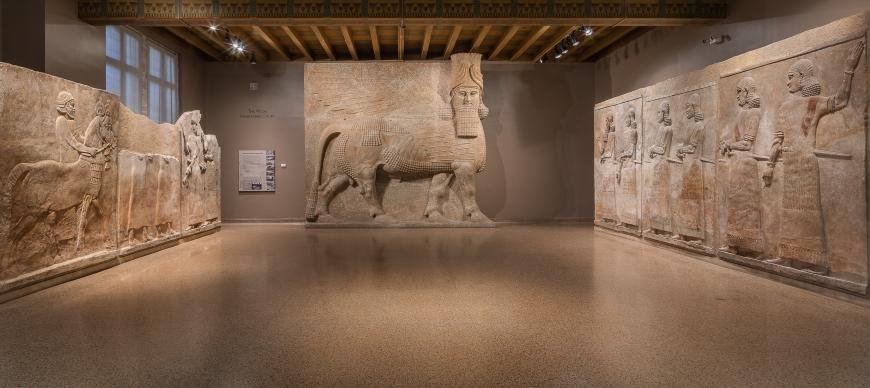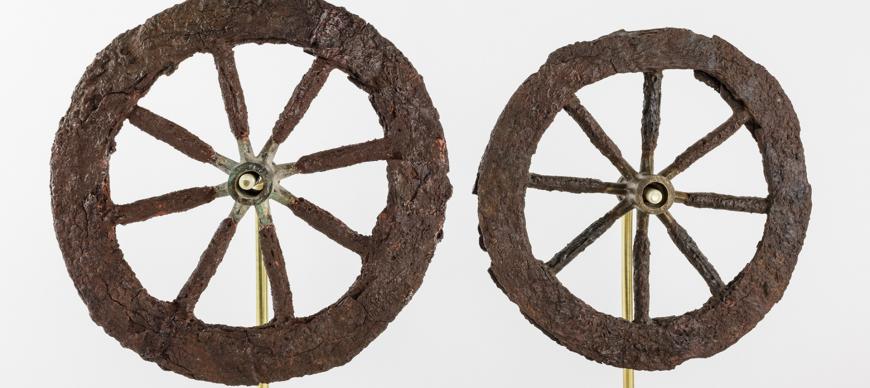The Yelda Khorsabad Court recreates part of the interior of a palace courtyard of the Assyrian king Sargon II (721–705 BCE) from Dur-Sharrukin (modern Khorsabad), giving visitors the opportunity to learn about Assyrian royal building under the watch of a 40-ton human-headed winged bull (lamassu). Other highlights include a section of a brick-brick panel and embossed bronze bands from Assyrian temples, a relief panel of a winged mythological figure (apkallu) from Kalhu (modern Nimrud), and a digital recreation of the citadel of Dur-Sharrukin.
The majority of objects in the Yelda Khorsabad Court and Dr. Norman Solhkhah Family Assyrian Empire Gallery were excavated by ISAC's Iraq Expedition (1929–1935) at the archaeological site of Khorsabad (ancient Dur-Sharrukin, “Fortress of Sargon”). Additional objects on display demonstrate the geographical extent of the empire since they were excavated by ISAC at sites beyond the Assyrian heartland, including Nippur in southern Iraq and Tell Fakhariyah in Syria.




